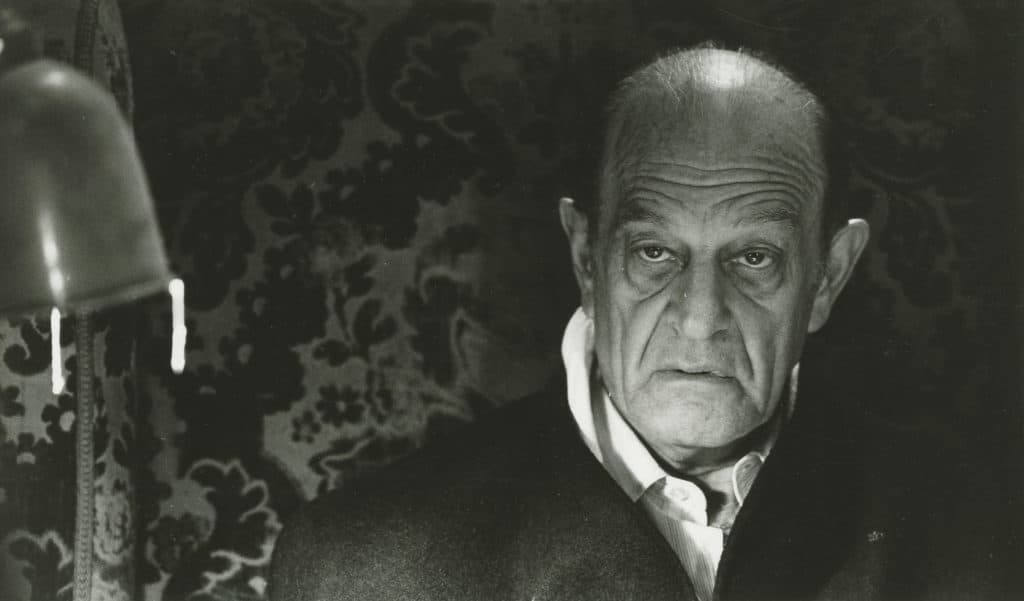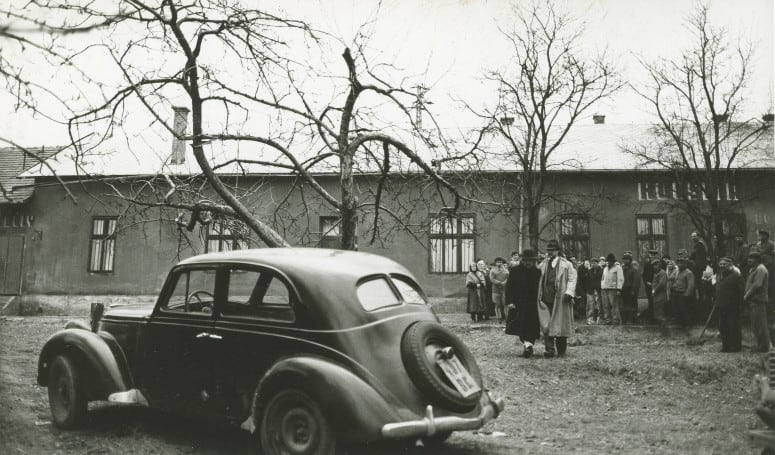Twilight (Szürkület) (1990) by György Fehér is the first of only two theatrical features by the director. Watching a pristine print of his second film, Passion (Szenvedély), in a 1998 post-Cannes screening remains one of my strongest cinematic memories. Since then, I’ve been waiting for the day when a decent version of Szürkület would see the light of day. This year, it finally happened when the film was screened in the Berlinale Classics section. It was, honestly, my main reason for attending the festival this year. Did the experience live up to my expectations? In that case, is it possible to explain why? The answers are yes, and probably not.
Szürkület is based on “themes by Friedrich Dürrenmatt”. What does that mean? Dürrenmatt’s novel The Pledge: Requiem for the Detective Novel (Das Versprechen: Requiem auf den Kriminalroman) was released in 1958 and has been adapted for TV and film several times, most famously in Sean Penn’s The Pledge (2001) with Jack Nicholson. Fehér’s adaptation differs from others in several aspects. It is technically not based on the novel, but on the writer’s earlier version, It Happened in Broad Daylight (Es geschah am hellichten Tag), which was intended as a film script. However, that is not the decisive difference between this adaptation and previous ones.

The Dream of Szürkület
There is not much emphasis on storytelling here. The film has been mentioned in the same breath as other films at the time, like Damnation (Kárhozat 1988) and János Szász’s Woyzeck (1994), but in many ways, it’s more opaque than either of those films. The Hungarian film critic György Báron wrote that he knew few filmmakers who could penetrate human faces to such depths as György Fehér but mentioned Carl Theodor Dreyer as one of them. Perceptive as that is, a Dreyer film came to my mind where faces are not the central characteristic: Vampyr (1932). It’s not necessarily that they look the same, but more for the dreamy feeling of depicting something basically intangible.
Miklós Gurbán was the cinematographer of both Fehér’s features, even though he shared his duty with Tibor Mathé on Passion. He supervised the digital grading of Szürkület, as well. These two films are by far the most distinguished Gurbán has ever lensed. 1He is listed as one of six cinematographers on Werckmeister Harmóniák (Werckmeister Harmonies 2000), but it’s unclear how much of the film was his work. Fehér most certainly had a significant impact on the film’s overall look. Talking about influences, Béla Tarr is another example of someone who was vastly influenced by Fehér, who was 16 years his senior. According to László Nemes, he was instrumental in Tarr’s Pärtesque change of style.

If Tarr’s Macbeth (1983) was influenced by Miklós Jancsó, another evident source of inspiration was Fehér, partly, but not limited to, his 1973 adaptation of Richard lll. There is a unique quality to the cinema of Fehér that is easier to experience than to explain. He said about the material that he was not into thrillers but instead regarded The Pledge as a Greek tragedy. He also stressed the need to make a film that would feel exclusively Hungarian. Tarr talked similarly about his largely misunderstood Simenon adaptation The Man From London (A Londoni férfi 2007).
A Variety review claimed that “Scripter-director Fehér insists on denying the audience any satisfaction whatsoever, focusing exclusively on the obsession and refusing to introduce any kind of evidence that would lead the case forward.” The reviewer also suggested that it would make a perfect album of artistic black-and-white still photos. There was obviously no attempt there to understand what Fehér was going for. Contemporary attempts to achieve something similar have routinely failed. An early scene of two men in a car might recall an early scene in The Lighthouse (2019), but comparing them would merely point out the latter film’s ineptness.
Szürkület will hopefully make the rounds at the festival circuit this year. The hallucinatory images combined with László Vidovszky’s music will make the film the highlight of the year for anyone seriously interested in cinema. If possible, watch it in a theatre.

